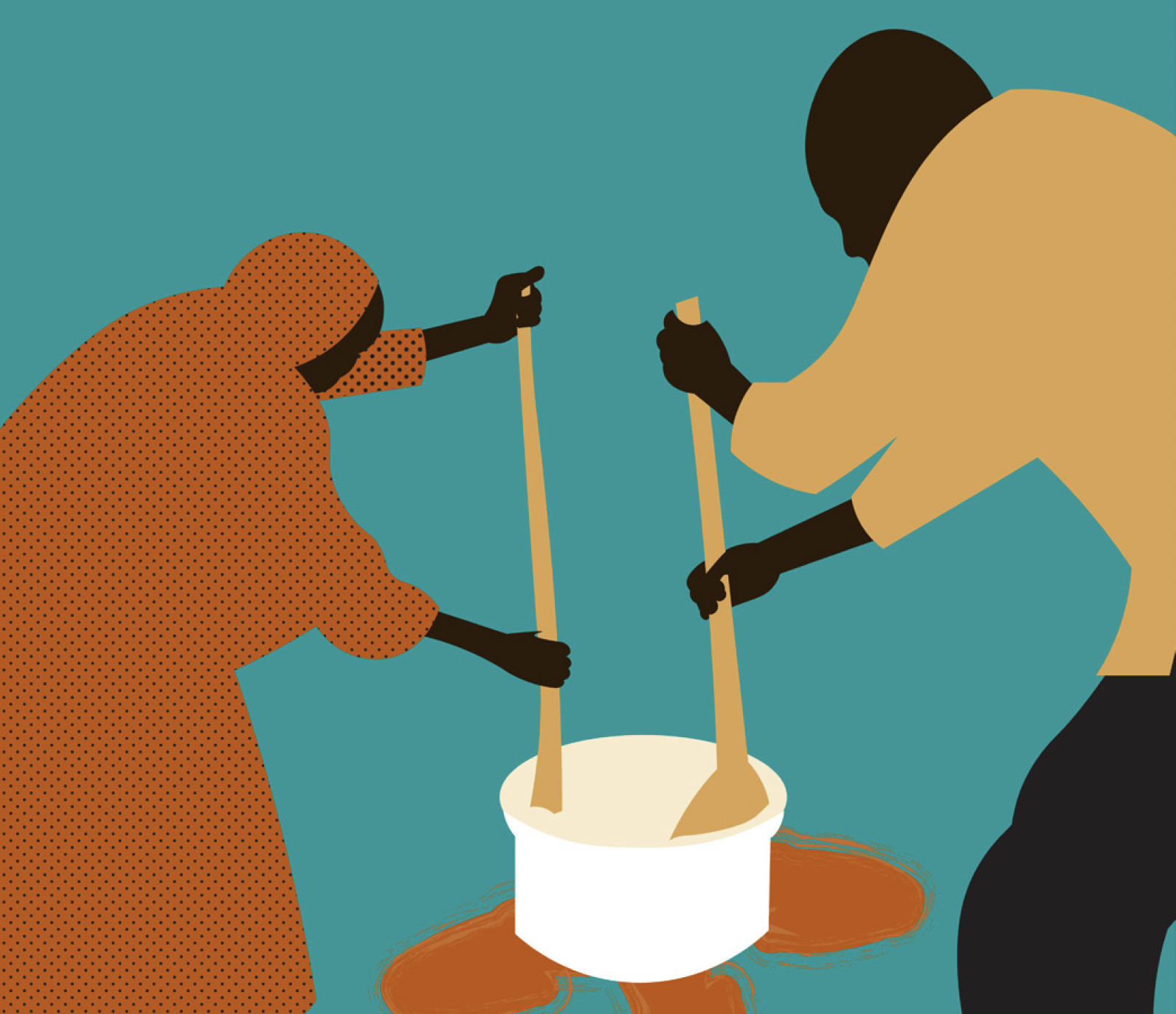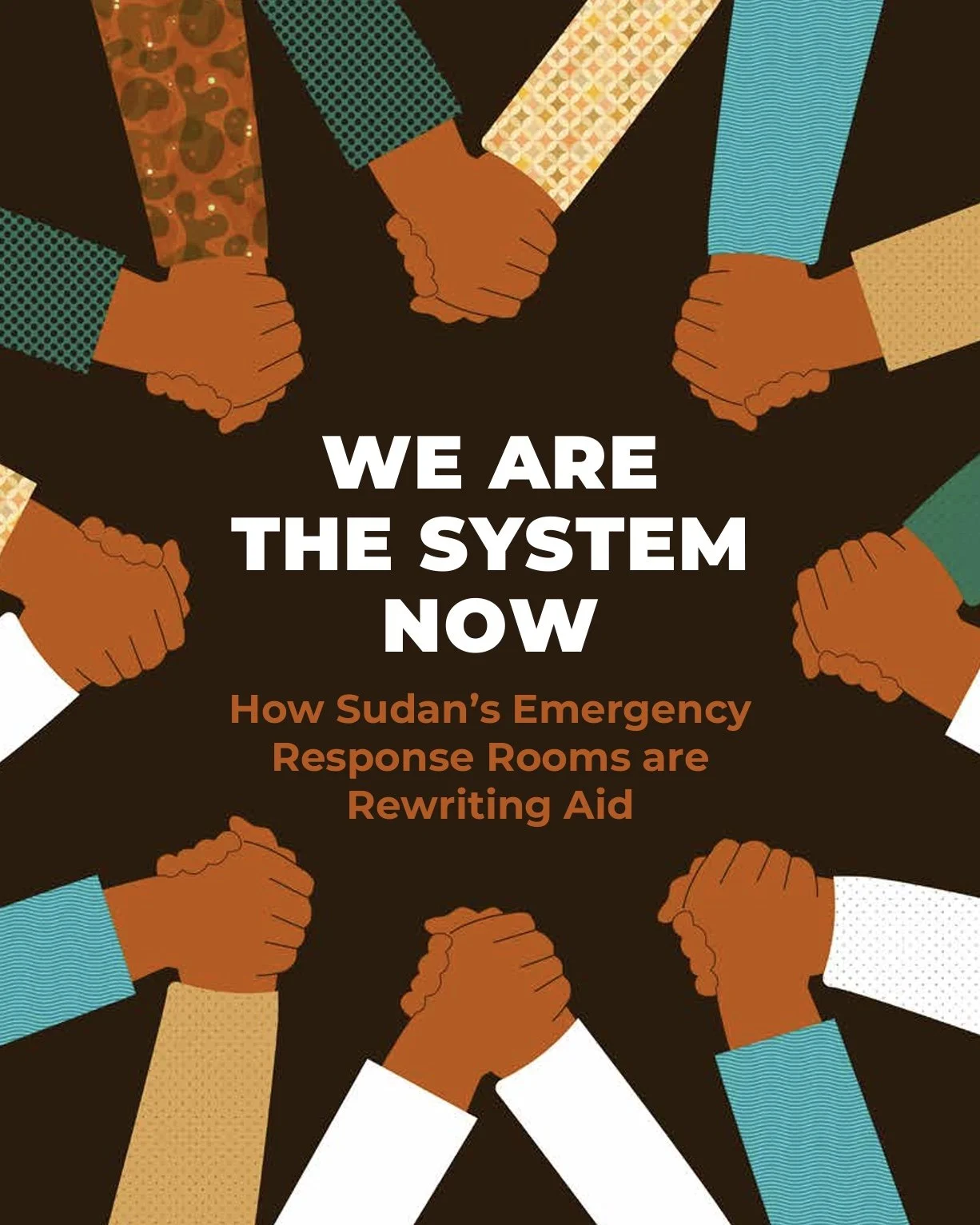
How Sudan’s Emergency
Response Rooms are
Rewriting Aid.
Sudan’s War and the Humanitarian Gap
The war that erupted in April 2023 between the Sudanese Armed Forces (SAF) and the Rapid Support Forces (RSF) has driven Sudan into one of the world’s most severe humanitarian crises. As of mid-2025, nearly two thirds of the population (30.4 million people) needed humanitarian assistance.1 Half of the population (24.6 million people) faced acute hunger,2 and famine has been confirmed in at least five locations, including camps in North Darfur and in the Nuba Mountains, and is spreading to additional areas in Darfur and South Kordofan.3 More than 10 million people, about one in five, have been displaced. The collapse of state infrastructure, deliberate attacks on humanitarian services, obstruction of access, and severe funding shortfalls have created massive gaps in response. The breakdown of Sudan’s banking system and restrictions on financial transfers have further impeded resources from reaching frontline responders.
These challenges have strained both international agencies and local initiatives. Many UN bodies and INGOs have suspended or scaled down operations since the start of the conflict, leaving millions with little to no assistance.5 In response, communities mobilized, and mutual aid groups, although also impacted by the same challenges, stepped in.
Among these grassroots efforts, the Emergency Response Rooms (ERRs) rapidly emerged as the primary, and often the only, responders in many areas. By August 2025, there were an estimated 700 ERRs across 13 states and more than 20,000 volunteers.6 Built on Sudan’s long-standing tradition of mutual aid, ERRs are decentralized, volunteer-driven networks that provide life-saving assistance across the country. They organize communal kitchens, distribute food baskets, support hospitals and health centers, repair water and energy systems, provide psychosocial support to survivors of sexual violence, and evacuate civilians from areas of active fighting. ERRs have also played a vital role in receiving displaced families into host communities. Their legitimacy comes from community trust, they are accountable to their own communities, and their strength from the ethos of volunteerism. In 2024, their work was recognized with a Nobel Peace Prize nomination.
Yet, ERRs receive only a marginal share of international aid to Sudan. They are excluded from most funding and coordination platforms because of rigid compliance rules, pressure to register as NGOs, and other obstacles. Both the SAF and RSF have accused ERRs of bias. These accusations are political tools, part of the weaponization of aid and state efforts to control resources, not impartial assessments. The fact that both warring parties contest ERR neutrality is evidence of their independence and their accountability to communities rather than to those in power.
This study shows that ERRs are not temporary stopgaps but the foundation of Sudan’s civic and humanitarian resilience, but a critical, long-term resource. They offer a model of solidarity-driven, community-owned response that can inform more equitable approaches to aid both in Sudan and globally.
Top 5 priorities for donors and international partners:
1. Provide flexible and rapid funding through small-grant and rapid response mechanisms.
2. Recognize ERRs as legitimate humanitarian actors, not just implementers for internationals.
3. Invest in volunteer resilience and wellbeing, including psychosocial support.
4. Support ERR coordination, especially through the LCC and referral pathways.
5. Build learning platforms and peer exchange to preserve institutional memory and strengthen learning and solidarity.
The future of aid in Sudan will be shaped not only by the resources invested, but by whether international actors are ready to share power with local leaders. With meaningful support, ERRs can continue to save lives and sustain communities, while also offering a model for reimagining humanitarian aid globally.


